The year is 2010 and I’m explaining to you that, a decade from now, Volvo’s almost-unknown motorsport partner will be wrestling for supremacy with an American car company whose only product to date is an electric take on the Lotus Elise. You laugh, because it all just sounds so implausible. Tesla Motors will soon become the first US manufacturer to go public since Ford in 1956 and Polestar is starting to flex its appeal here in Europe, building go-faster versions of Volvo’s regular but increasingly attractive saloons. But the two hottest mass-market properties in an emerging low-carbon world order by 2020? Come on. Surely the German and Japanese giants would never let that happen…
Yet here we are, at Millbrook Proving Ground in Bedfordshire, with a Tesla Model 3 and a Polestar 2. The former needs scant introduction. The reptilian-eyed Model 3 remains the most popular electric car in both North America and China – and before Renault refreshed the Renault Zoe, Europe also. Some treble, that. People gravitate towards Tesla because its cars tend to go further and charge faster than anything else, and even the lowliest Model 3 – the Standard Range Plus, which at £40,490 is the most junior Tesla and uses one motor, not two – can out-accelerate even something as rapid as Honda’s Civic Type R. Tesla also sets itself apart from established manufacturers ideologically, but you could write a book on that subject alone. The takeaway is that, for those keen to wean themselves off petrol, the Model 3 is one hell of a package.
One thing it never had was a true rival, until now. The 2 is an electric car of Chinese, Swedish and, yes, British provenance (Polestar has a research and development base just off the M69, adjacent to where Rolls-Royce plc makes aeronautical fan cases) whose deadpan presence gives it the aura of something that could have escaped from a clandestine military facility. At £51,900 when fitted with the Performance Pack (which adds Brembo brakes, 20in wheels, gold detailing and, if you hadn’t heard, manually adjustable Öhlins dampers), it costs roughly what this Model 3 costs, and the quoted 292 miles of WLTP range certainly isn’t buried by the 329 miles of its rival.
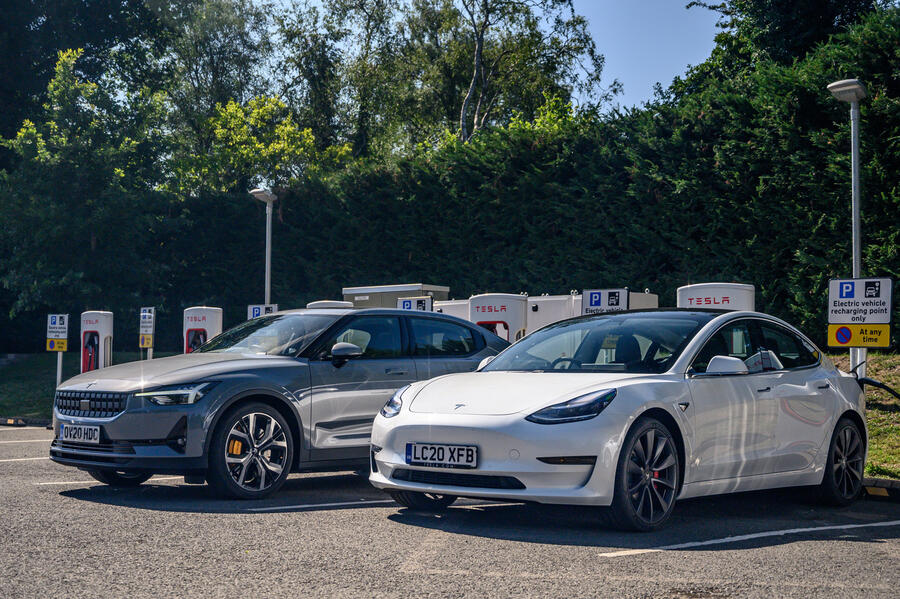
True, were you to go for the Long Range version of the Model 3 rather than the Performance tested here, you would cut the price from £56,490 to £46,990 and extend your one-hit reach by 19 miles. But equally, if you ditched the Performance Pack, the 2 would cost a near-identical amount.
As for pace, the Model 3 Long Range can accelerate from 0-60mph in 4.4sec and the 2 takes 4.7sec, so regarding the one metric that the EV evangelists just love to quote, there’s little in it. Or at least that would be true were our Model 3 not a Performance. Its 3.4sec sprint time is closer to that of the McLaren F1 than the 2, but in broad terms, these cars are still deliciously closely matched.
We have but one day, so the plan is to run down the M1 from Millbrook, splice through London then wind our way down through the capital’s suburban south and on to Ashdown Forest. From there, we will go cross-country to Liphook in Hampshire where, if the maps are to be trusted, we will find rapid chargers for both cars. The trip is 160 miles, which shouldn’t trouble our protagonists, despite the varied roads, yet is further than many owners will regularly need to travel. (Rivalry aside, the EV business has certainly progressed in the past five years.) Getting under the skin of these cars will require long-term tests with plenty of numbers crunched, of course, but today will be interesting nonetheless.
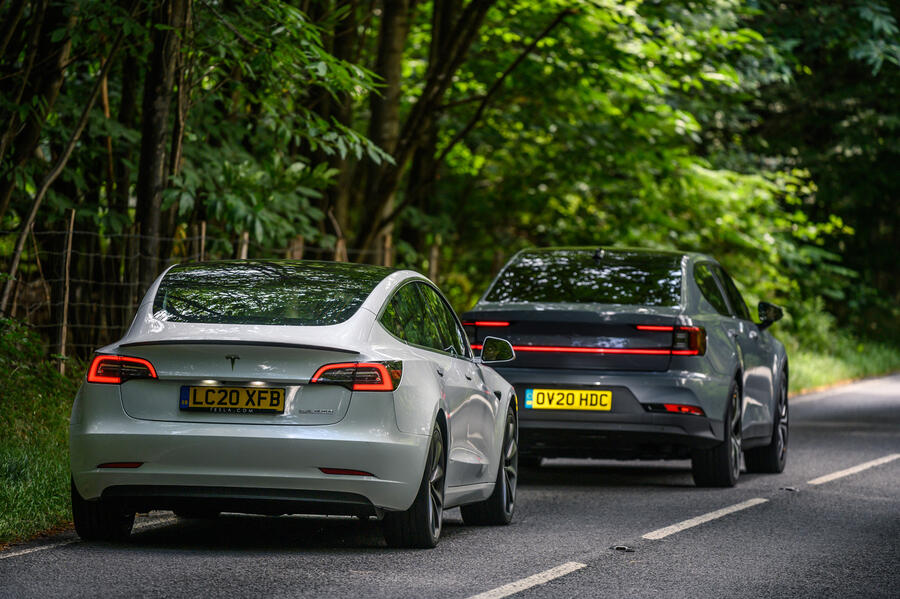
It being the newcomer, it’s the 2 I take for our first motorway stint. Observations? Given that it exists on a version of the Volvo XC40’s platform, its cabin dimensions follow suit. It’s intimate, despite the glass roof, but more than anything else, it’s sophisticated. The high scuttle and transmission tunnel not only instil a persuasive sense of security but also embed you in Polestar’s wonderful array of textures: grained wooden inlays, woven fabrics and tactically deployed brightwork. Truth be told, it’s not dissimilar in ambience to the Porsche 911, which is some compliment, considering plenty of elements are still scavenged from regular Volvos. Naturally, it’s also vegan, although so is the cabin of the Model 3 as of last September. Touché.
On the move, the 2 builds on that sense of wellbeing, which stands it in good stead on the motorway. It’s calm at speed and premium-brand quiet. Its nicely weighted driving controls and pillbox-esque view forward also make it feel like the kind of car you would want to be in if the rain were lashing sideways and you were stuck on some godforsaken back road.
The driving position feels also commanding but, because your hip point is set lower than in the XC40, doesn’t feel perched, while the new Google-developed infotainment is very slick in terms of response and resolution. The digital instrument binnacle works neatly, too, but given the minimalist manner in which data is presented, maybe Polestar could have gone more slimline with it, which in turn would have allowed the cowling to sit lower, giving the interior a greater sense of space.
By the time we reach London, the 2 has made an excellent impression. The cabin feels every penny the car’s asking price and, to operate, the car is as intuitive as any EV I’ve driven. Even starting the thing involves no button-pushing or key-slotting. You simply slide in, depress the brake pedal, slip the hollowed-out gear selector into D and pull away. The fabric-trimmed seats, which use an especially good Volvo design, then underwrite the material richness with true comfort.
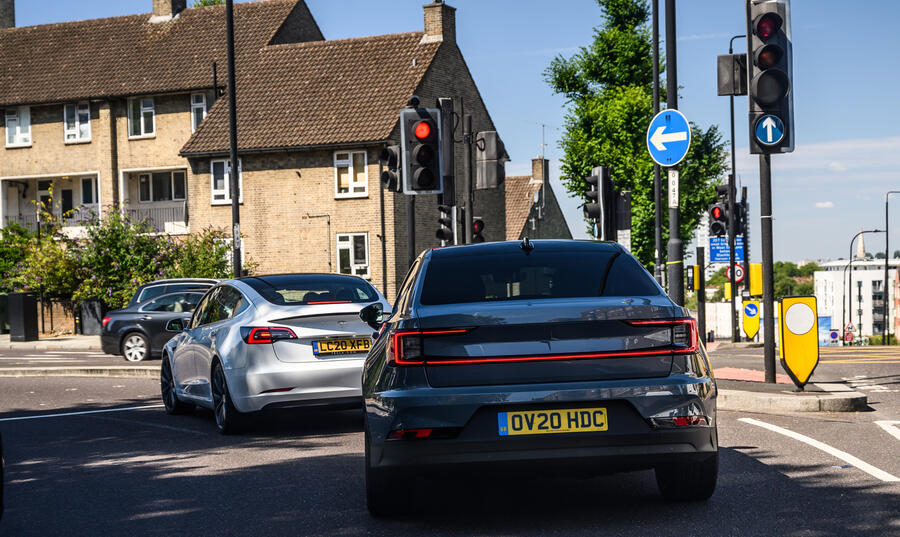
Yet that comfort isn’t total. With 402bhp split evenly between the axles and a low centre of gravity, the 2 should make good on its sporting promise, but the decision to go with Öhlins dampers is curious. Later on in this journey, the suspension will exhibit moments of magic, but on the motorway, and even with the dampers adjusted for softness (18 clicks for the front, 20 for the rear, if you’re wondering), the ride is stiffer than necessary. For all its gold-tinged aesthetic appeal, the Performance Pack might be one to miss.
Especially for shrinking violets. In London’s Zone 1, the 2 attracts attention totally out of kilter with its status. Genuinely, only the appearance of an extraterrestrial LaFerrari in searing giallo prises eyeballs elsewhere. Notchback SUVs aren’t adored within the pages of Autocar, but if the 2 needs to succeed as an object, mission accomplished. The way the afterburner rear LEDs combine with the bodywork’s bevelled edges and the neat middle ground that Polestar has found between having a traditional grille and not makes the Model 3 look clunky and anonymous by comparison.
As for inner-city driving, the 2 is no hardship, not least because its driving controls are thoughtfully tuned and progressive. To some extent, you wear this car. The indicator blips, which sound like bubblewrap popping, are pure catharsis. Only the poor visibility afforded by the letterbox rear screen is a reminder that pursuing form over function isn’t without penalty.
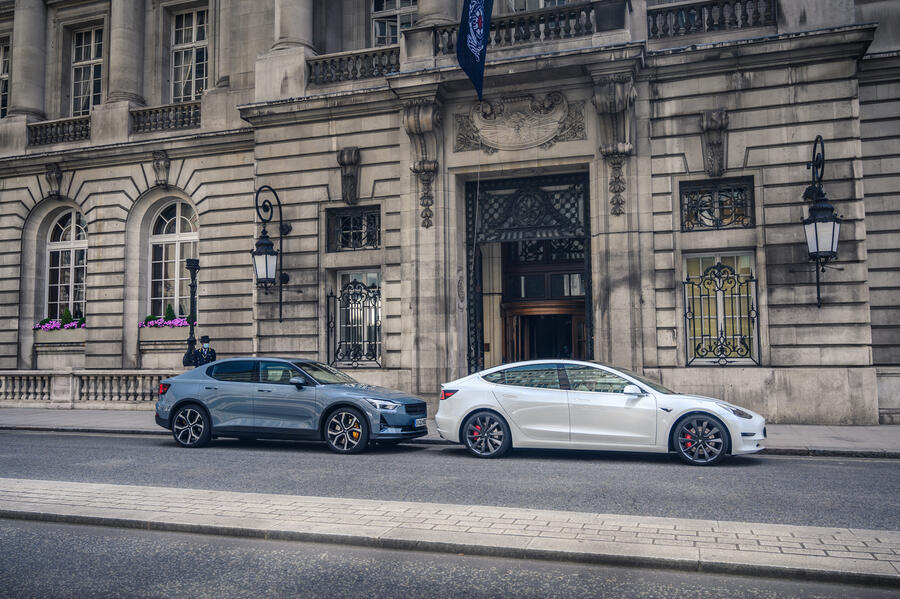
The same applies to the Model 3, although it manifests differently. After the vault-like 2, its interior is stunningly open-plan. Scandinavian, even. But I’m not at all convinced by the lack of dead-ahead instruments, especially as it means you have to go without an obvious speed readout. Such starkness also can’t hide the low perceived quality in comparison with European rivals. This is well documented, so I shan’t elaborate, but the steering wheel alone leaves the Model 3 feeling toy-like, which is hardly ideal for £56,000.
Still, the benefit of migrating everything, even mirror adjustors, to the 15in touchscreen is that the ambience on the move is delightful. Undoubtedly, the Model 3 capitalises on its tightly packaged powertrain more imaginatively than the 2. Its low scuttle yields an almost cinematic forward view, and where the Polestar feels comforting and conventional, the Tesla feels exciting and novel.
Moving out of central London, it also isn’t hard to see why Tesla’s cars are also addictive to drive, despite some shortcomings. The Model 3 is considerably longer than the 2, and the extra length in its wheelbase is tangible (except for rear passengers, whose feet are, if anything, more squeezed). Keep the powertrain in Chill mode and the car can even feel ponderous. However, tap for Sport and one inch of accelerator travel fires the Model 3 forward as though it has somehow managed to shake off half its 1850kg mass. Whereas the 2, with its more genteel reactions, could pass as some ludicrously quiet petrol car, the hair-trigger Model 3 could only be propelled by a motor or two.
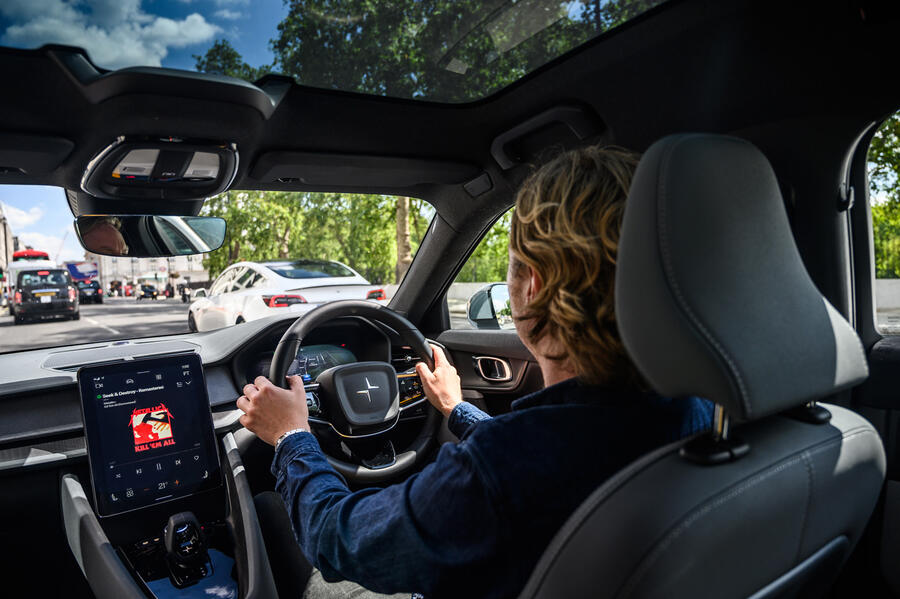
When we hit the cross-country stretch from Ashdown to Liphook, neither car feels anything less than sure-footed and swift, as you would expect with four-wheel traction and mass concentrated low down. But neither shines, either.
The Model 3 rolls less but this, in combination with steering that responds quickly at first but then settles into somewhat soulless uniformity, results in the driving experience feeling binary and faintly disconnected. Progress feels less natural than in the 2, whose movements are better finessed and whose handling is simply more satisfying when you want to flow. The Model 3 feels the more agile, but only at first, and it’s the 2 that has greater depth. The Swede’s off-throttle freewheeling capability is also an excellent feature – for me more useful more of the time than the one-pedal driving regenerativebraking settings that both cars have.
By the time we reach Liphook, some things are obvious. The 2 may be firm-riding, but it’s also less brittle underwheel and sweeter to drive than the Model 3, if not quite as immediately absorbing. Both provide an enjoyable driving environment, but those who have less avant-garde but more rarefied tastes will prefer the 2, whose cosseting cabin is more refined and whose controls are more intuitive to use.
Luggage space is limited in both (the ICE-powered BMW 3 Series betters each decisively), although four adults can comfortably travel aboard either. As for performance, the 2 will make you smile, but the Model 3 will make you gasp.
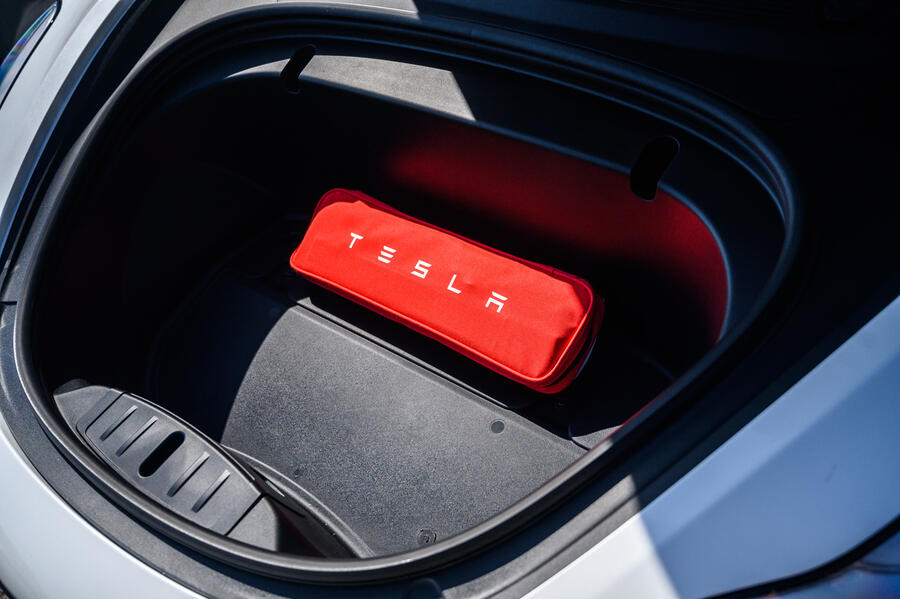
Of course, the boulders that still need turning over concern range and charging. At Liphook, having shown 289 miles at Millbrook with its 75kWh battery not quite brimmed, the Model 3 has 66 miles remaining. The 2, whose 78kWh battery had been fully charged and crisp display had shown 260 miles, now has 30 miles left. Make of that what you will, but know that the 2 is 200kg heavier.
Of greater significance is the fact that an array of Tesla Superchargers is waiting for us, with 100kW-plus charging moments away. Meanwhile, the 2 must make do with the promise of 50kW from a third-party charger at the local Shell station. Except said charger won’t play along. We find the next nearest rapid charger but have to wait behind somebody’s BMW i3.
This breaks the tie. For such close rivals, these cars are refreshingly different, and adjudicating is hard. But while the deeply covetable and likeable 2 is the finer product, the Model 3, more unapologetic and so characterful, provides the better experience. So it wins. Just.
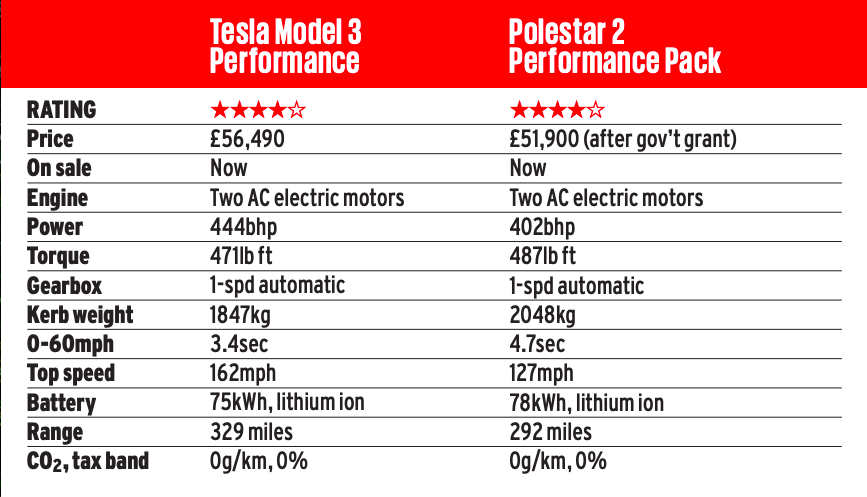
How much for a used model 3?
If you order a Polestar 2 tomorrow, don’t expect to have it on your drive until at least December. However, the Tesla Model 3 has been with us a short while now, so it’s reasonable to think you might just sneak a deal on a lightly used second-hand buy.
Unfortunately, we’re not there yet, and while it is possible to buy a Model 3 second-hand (not that you’ll find any on Tesla’s website, which otherwise has a good stock of Model S examples), don’t expect to save yourself much cash. As an example, we found a Model 3 Standard Range Plus with 10,000 miles on the clock but still with an asking price of £41,500. Admittedly, the car’s subscription-based self-driving software was already prepaid (that is, ready to go when Tesla finally flicks the switch), but it’s an example that prices aren’t slipping and demand is still strong.
Prospective owners can at least take solace in the fact that, according to Tesla’s website, were you to order a Model 3 tomorrow, it would arrive more than two months before the Polestar would show up.
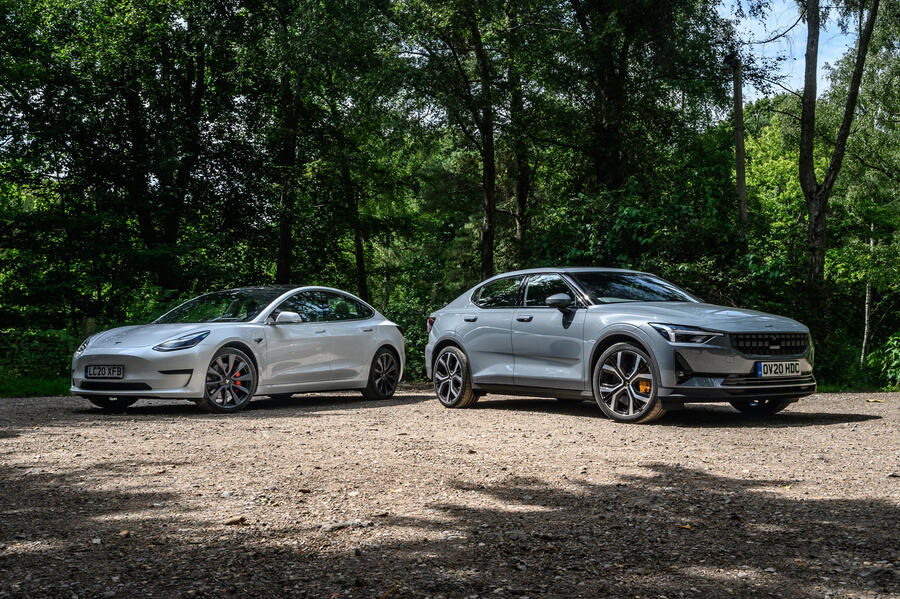
Read more
Saloon showdown: Tesla Model 3 vs BMW 3 Series​
Tesla Model S vs Jaguar I-Pace: EV twin test​

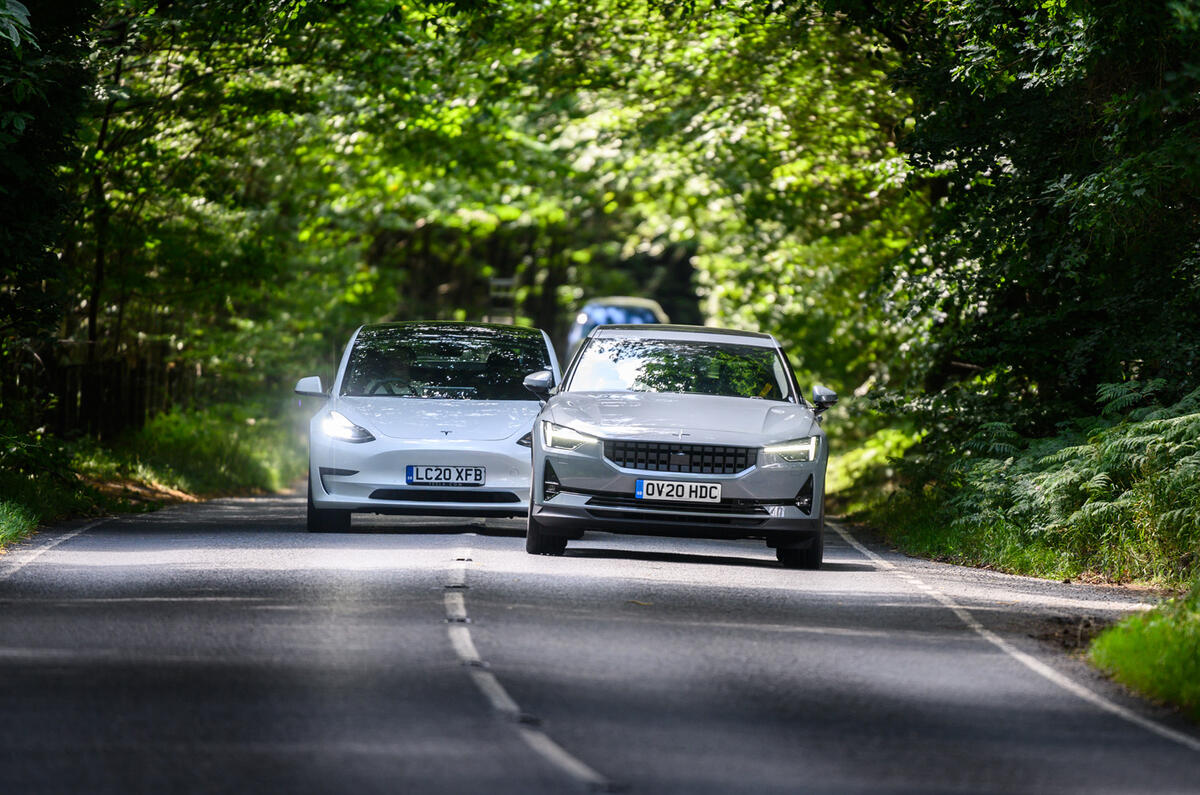
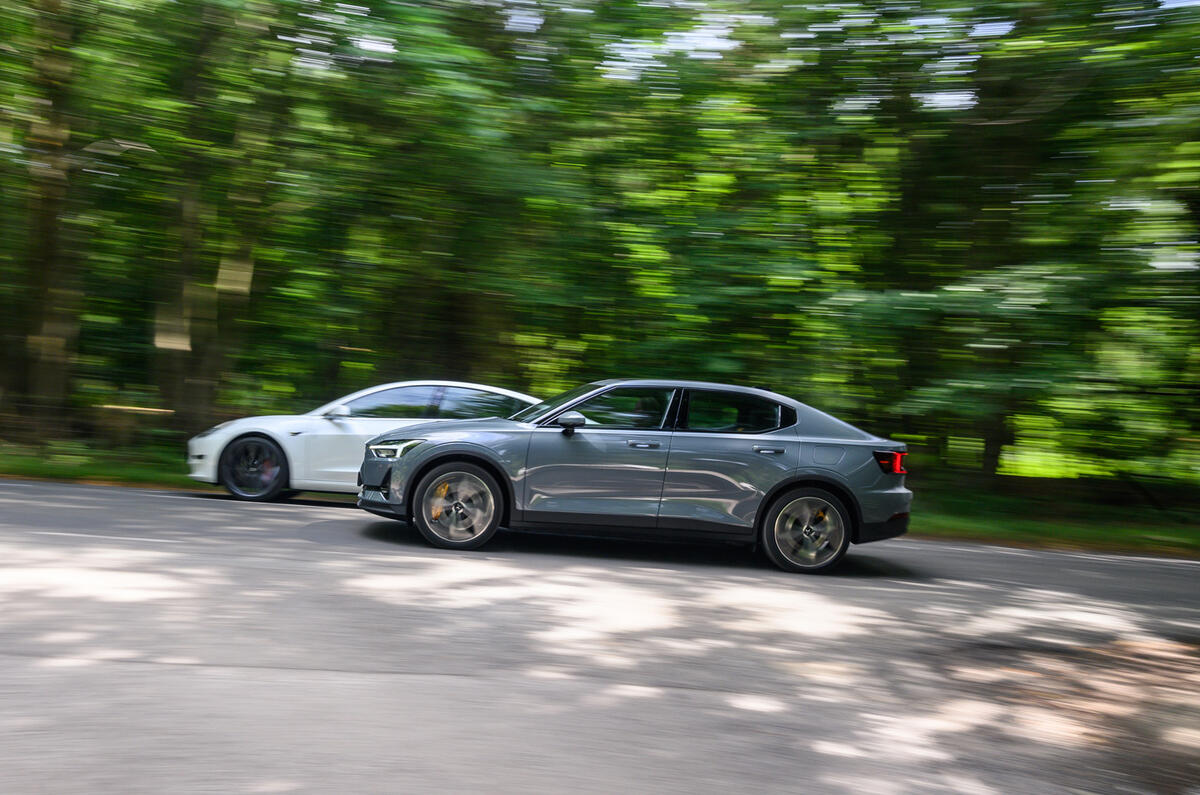
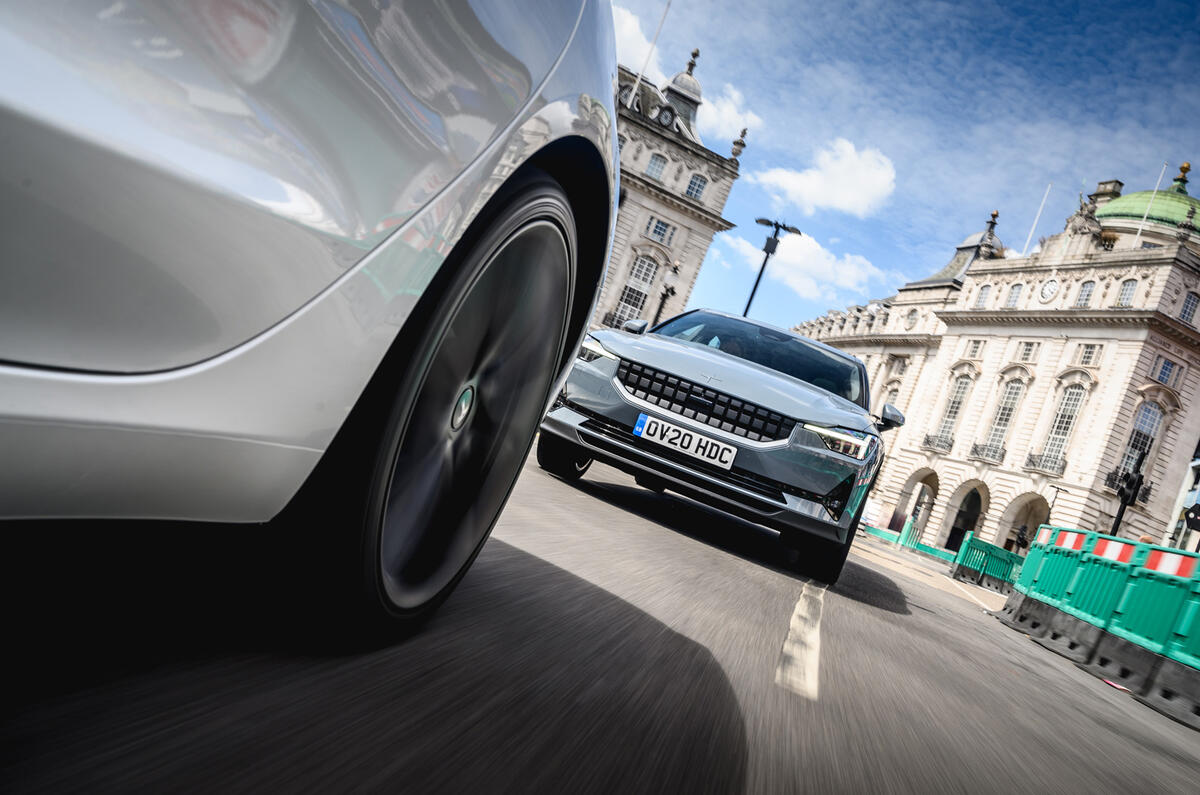
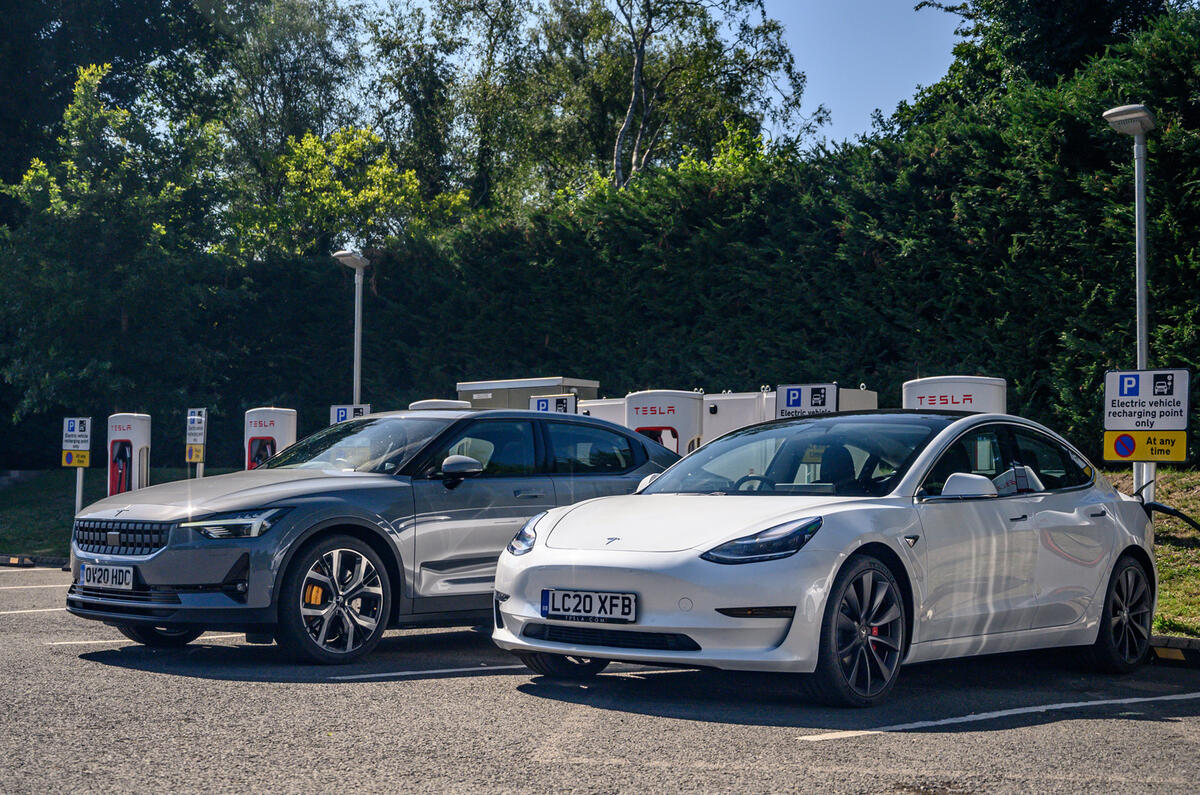
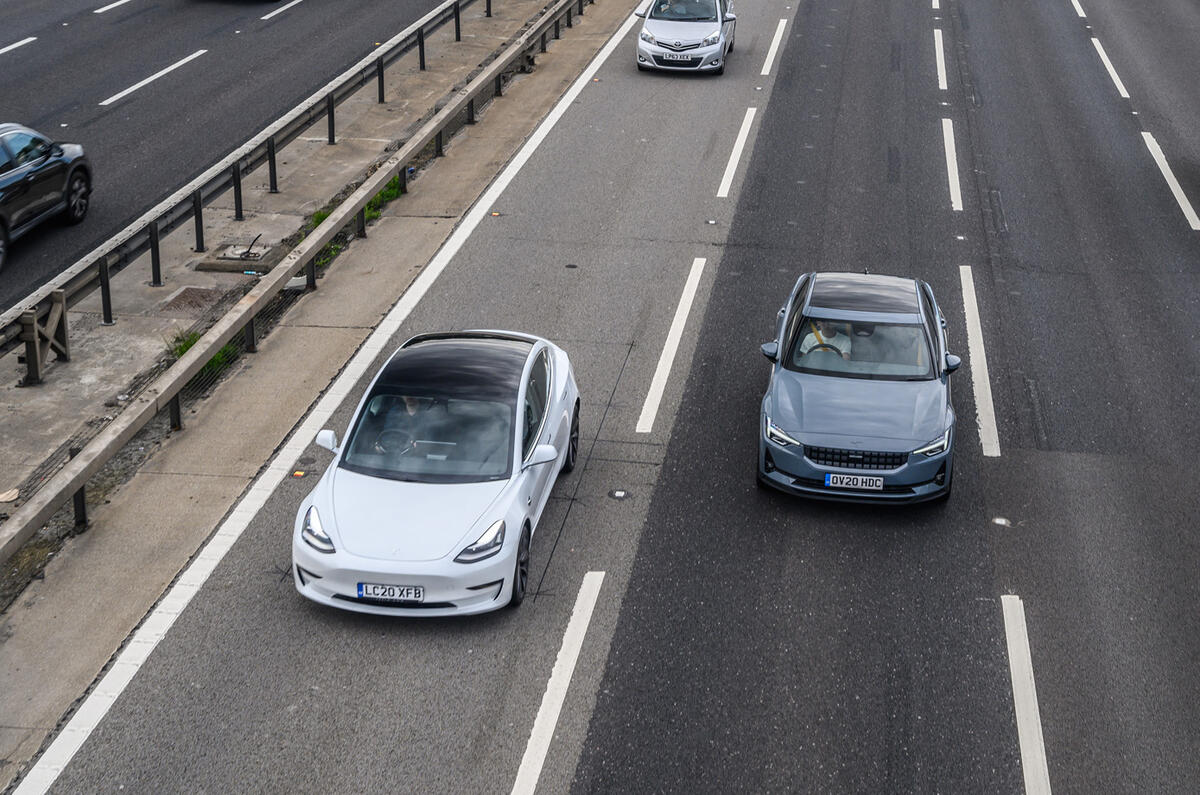
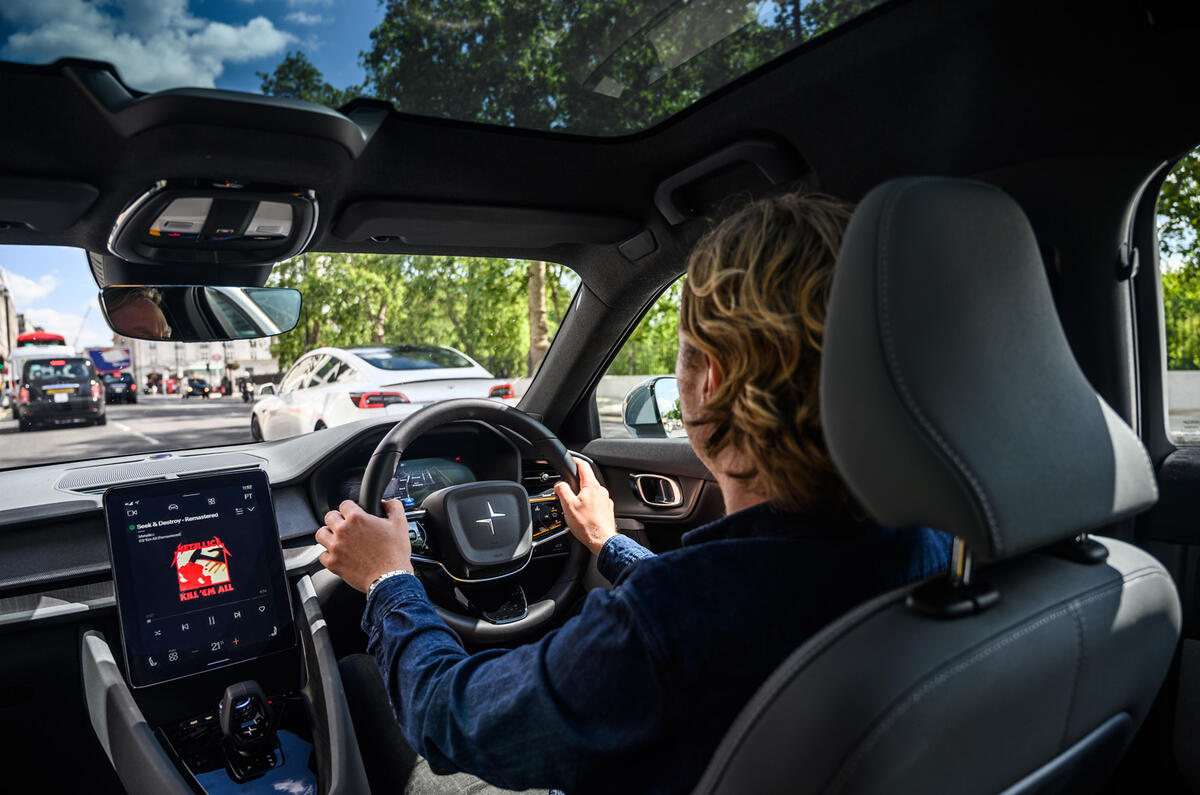
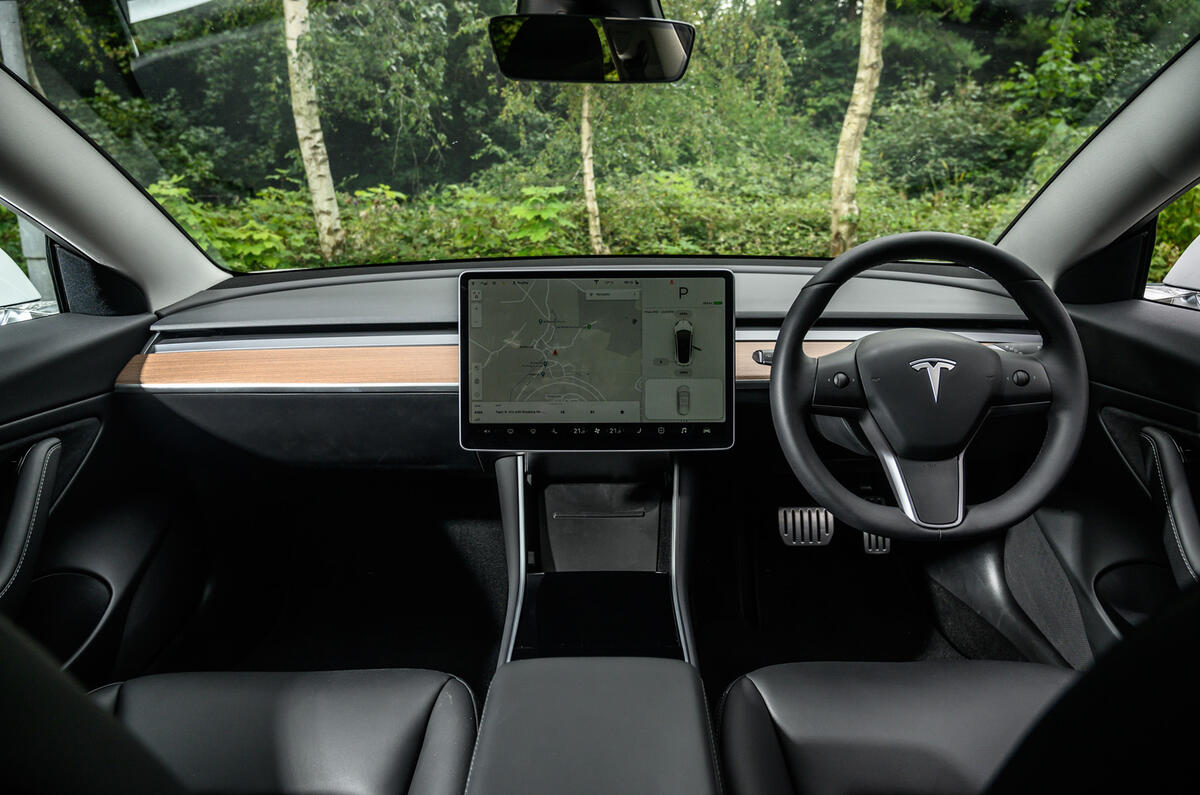

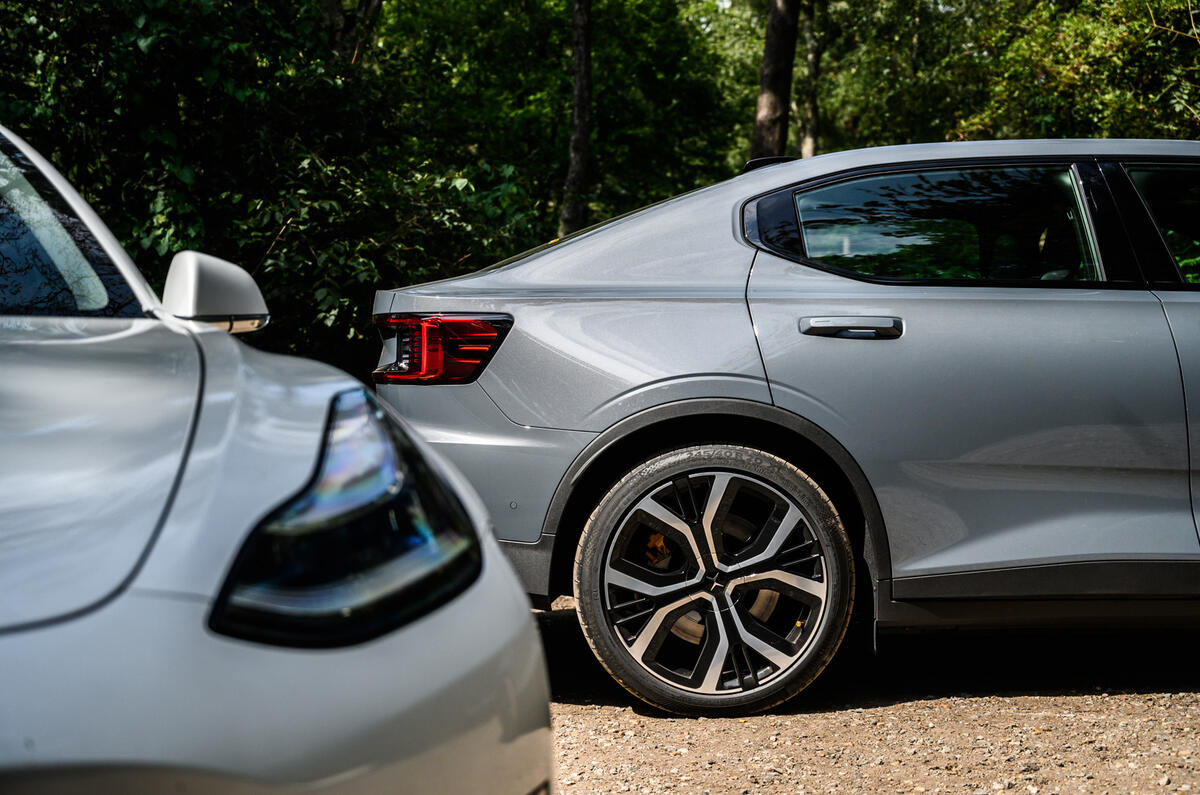
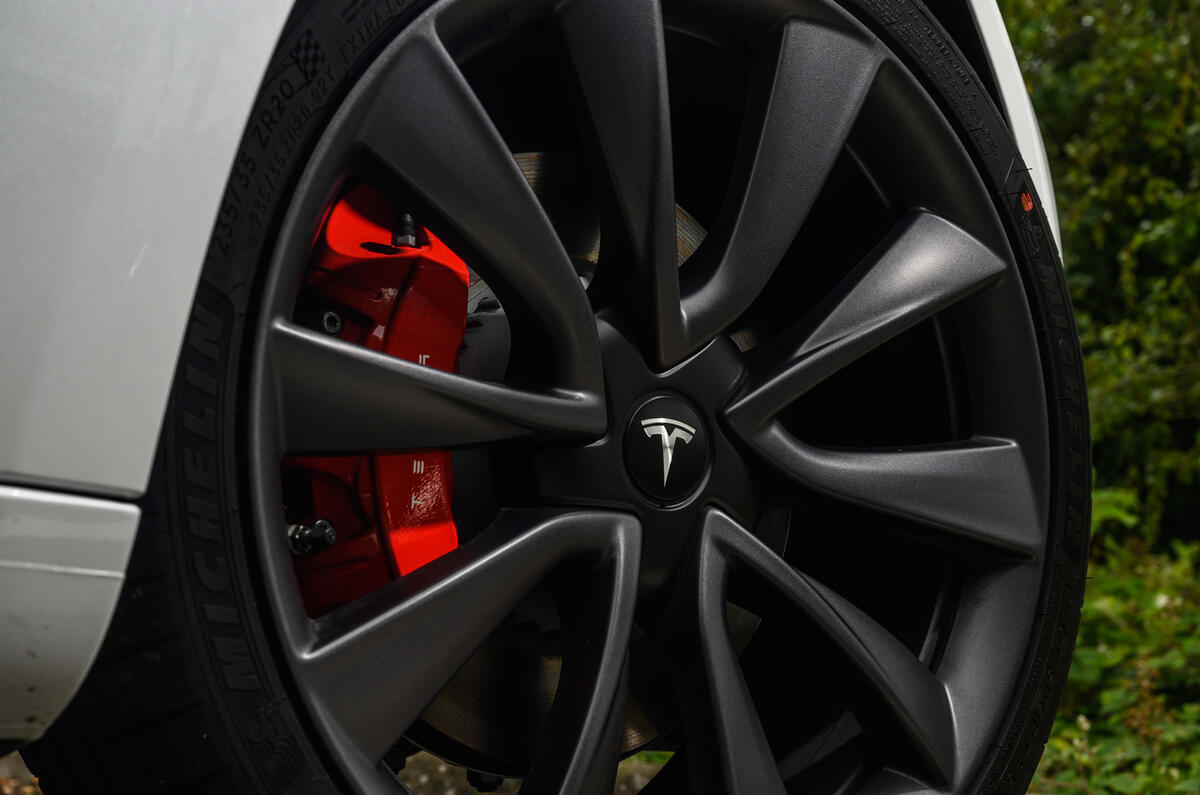
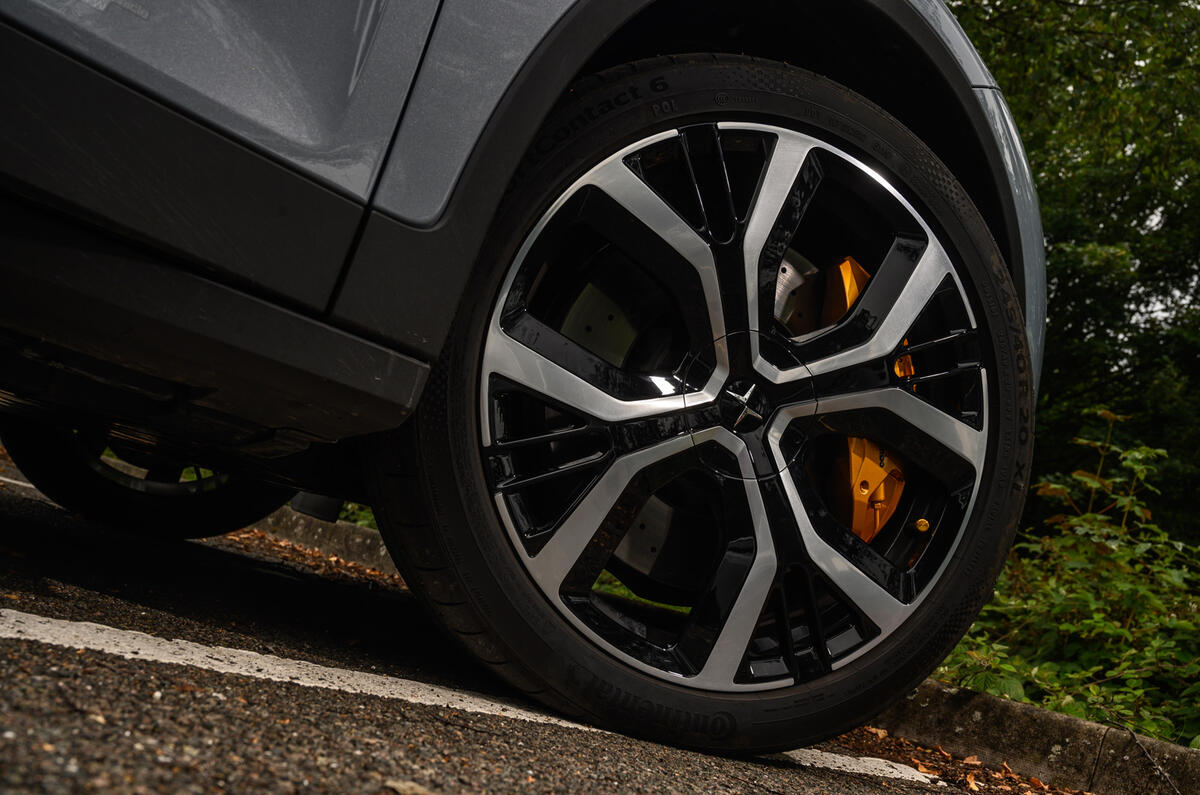
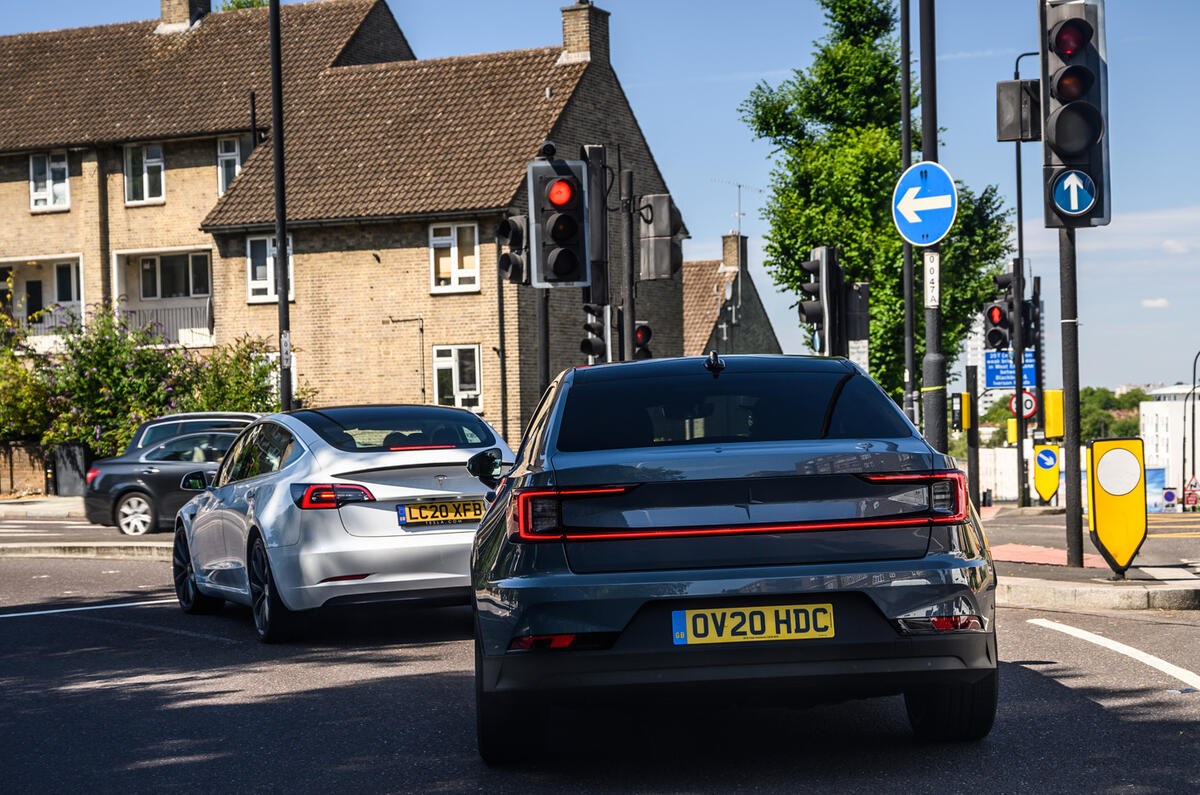
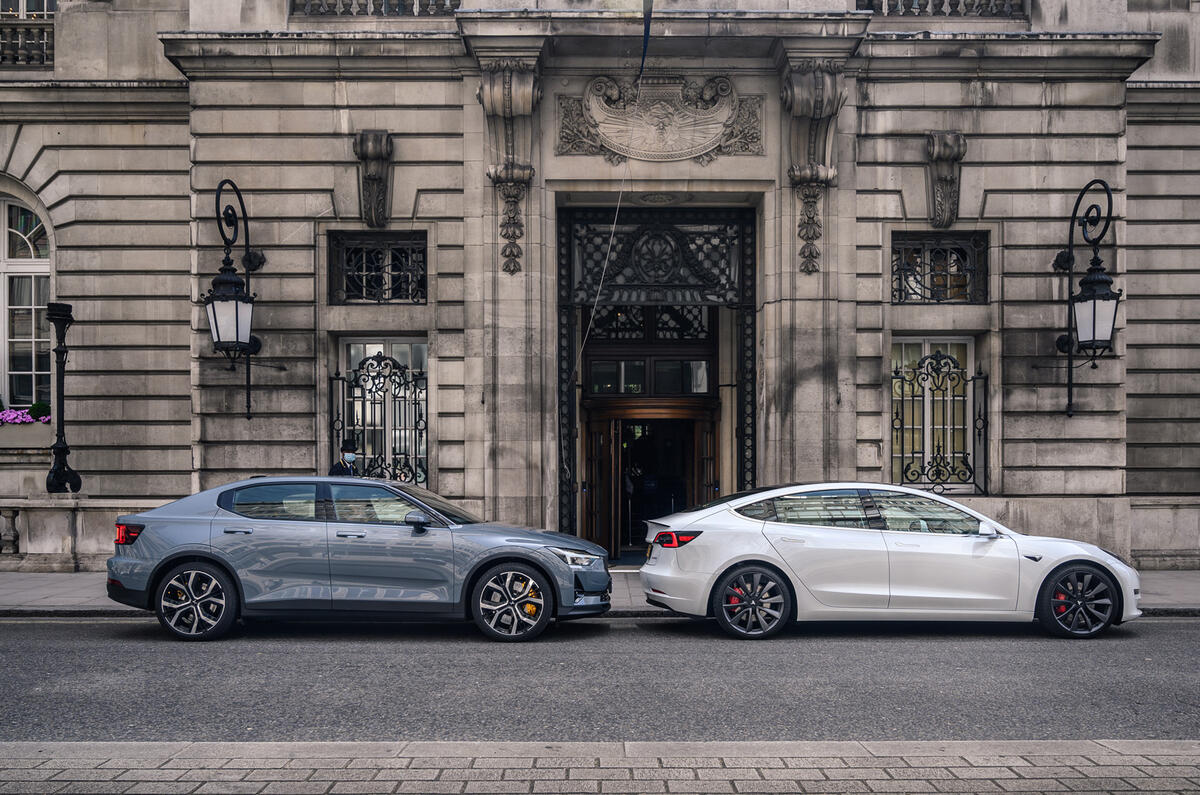
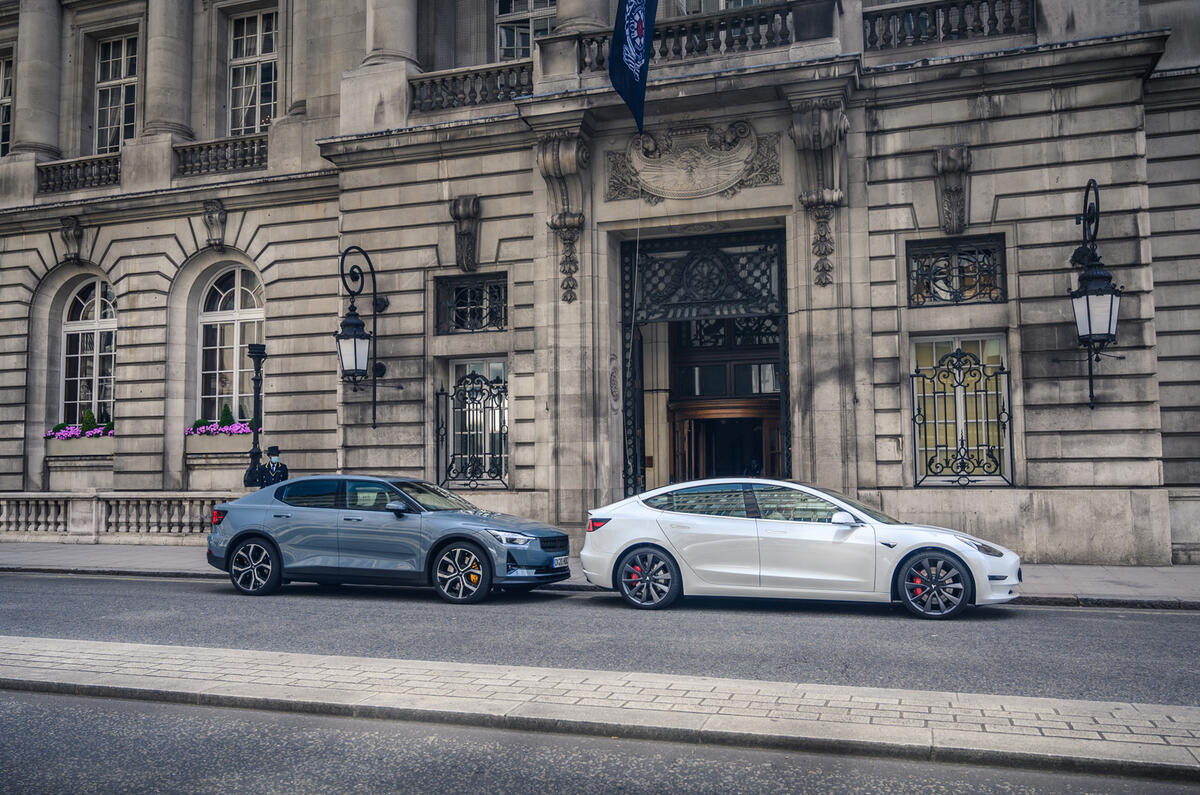
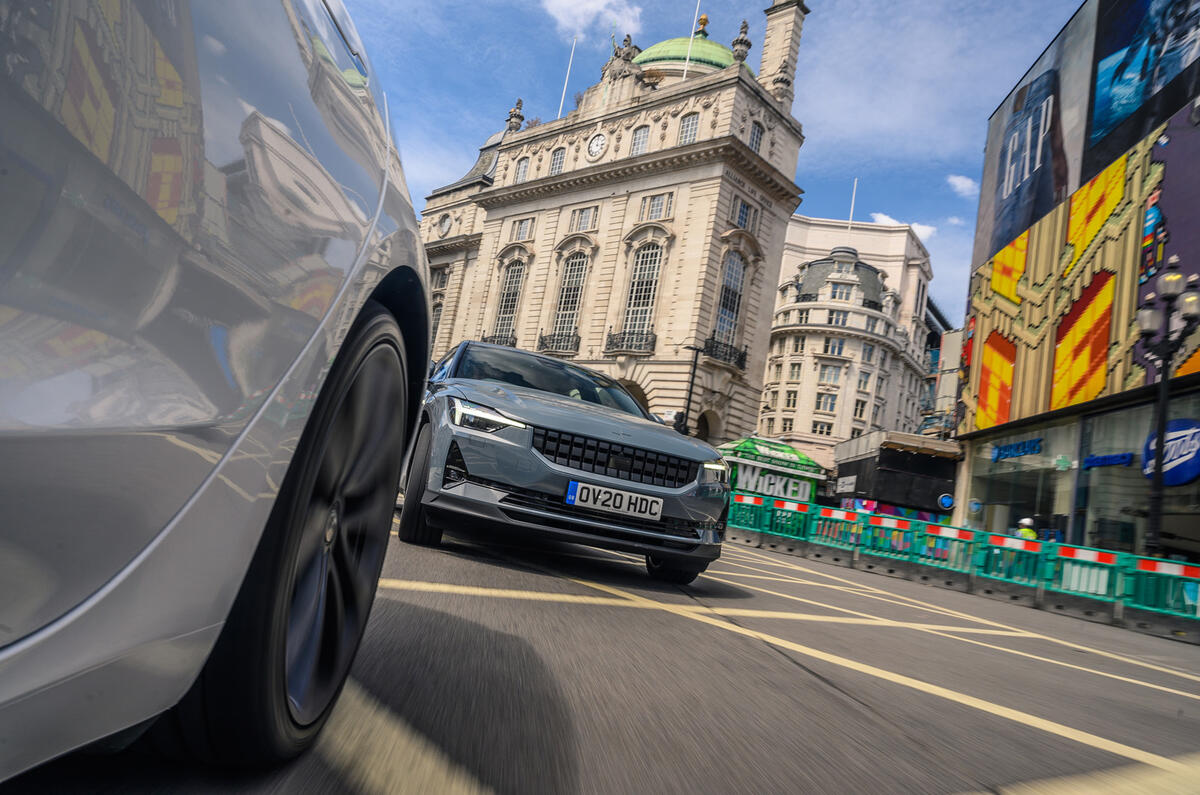

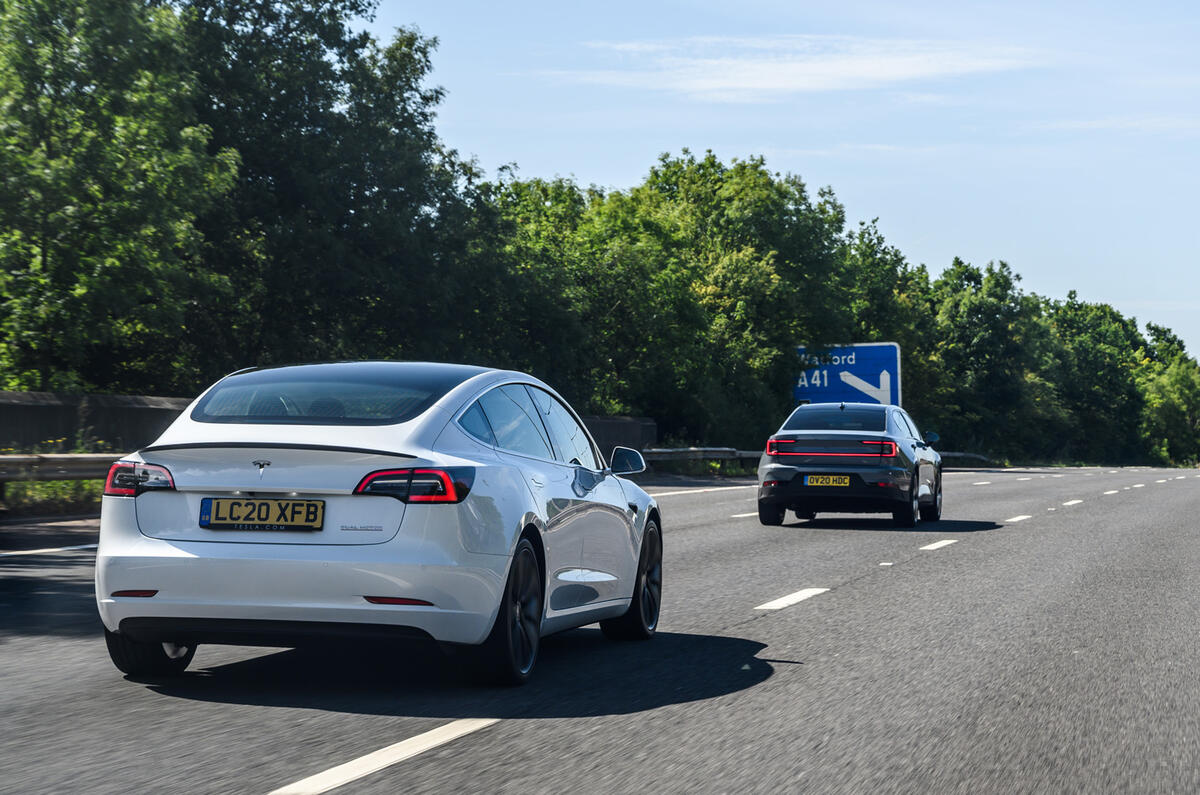
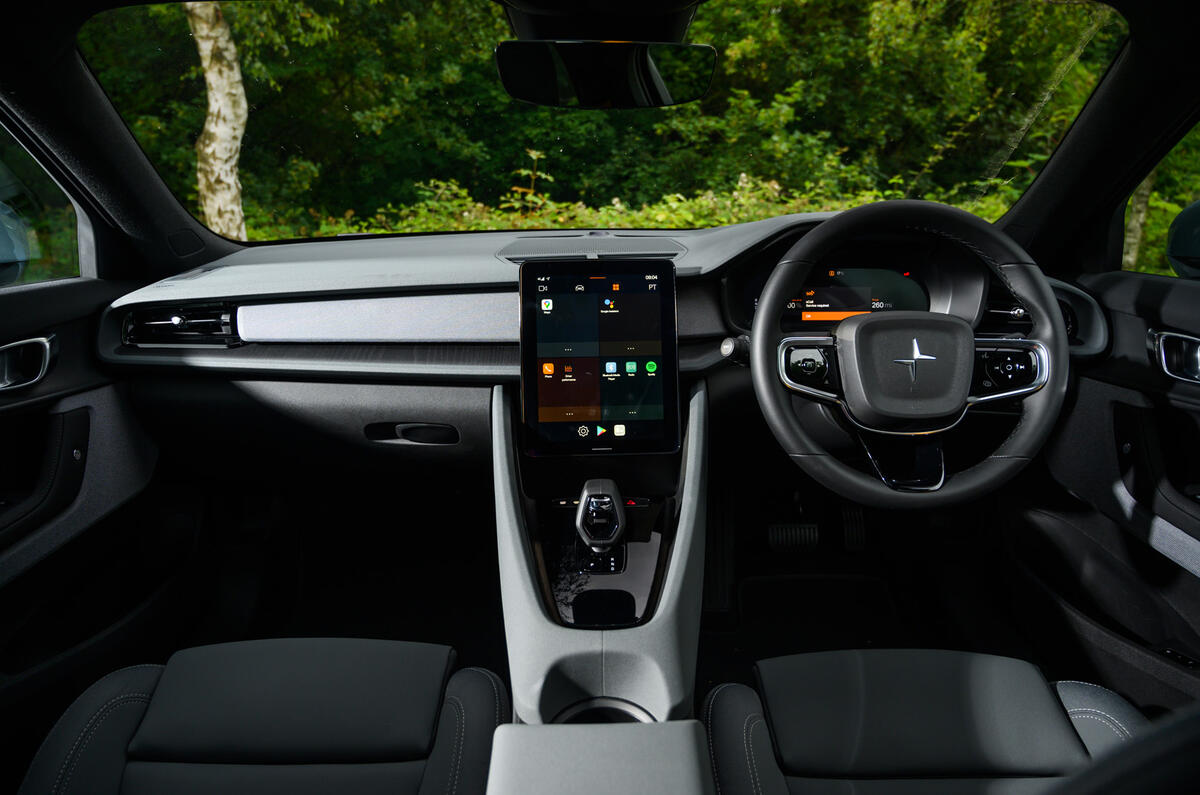
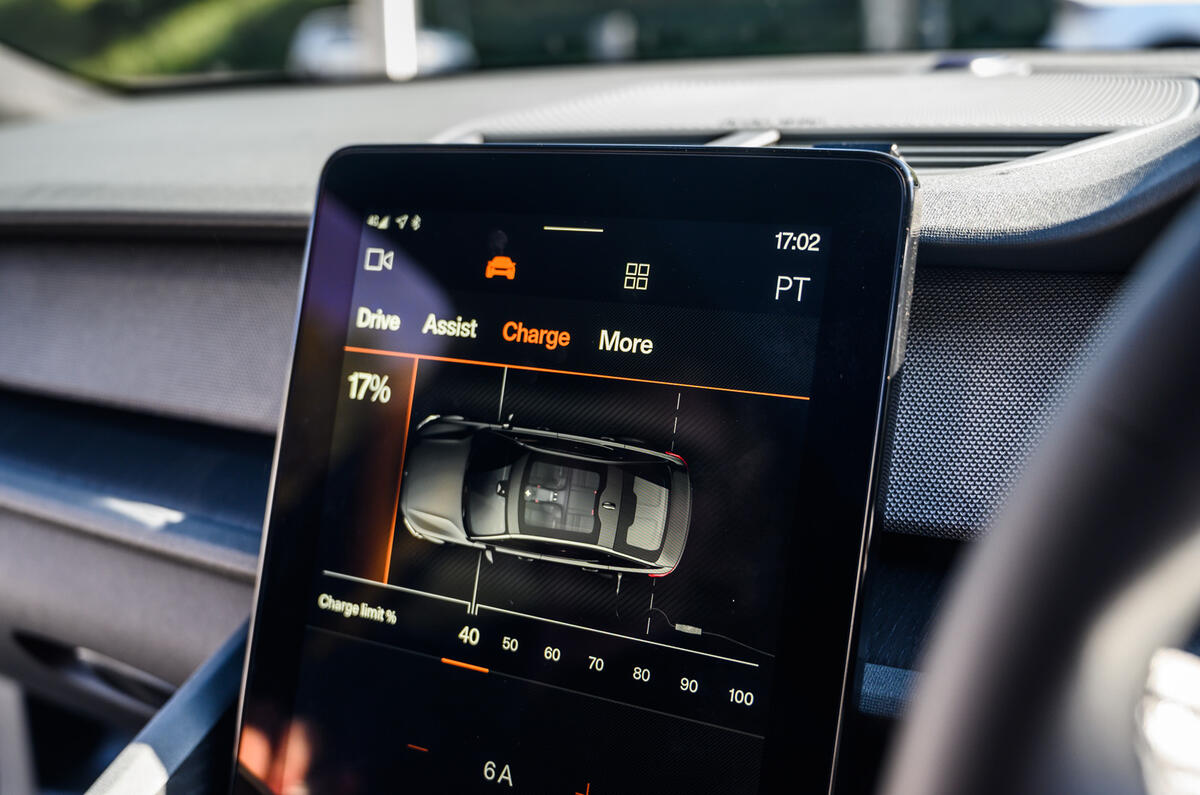
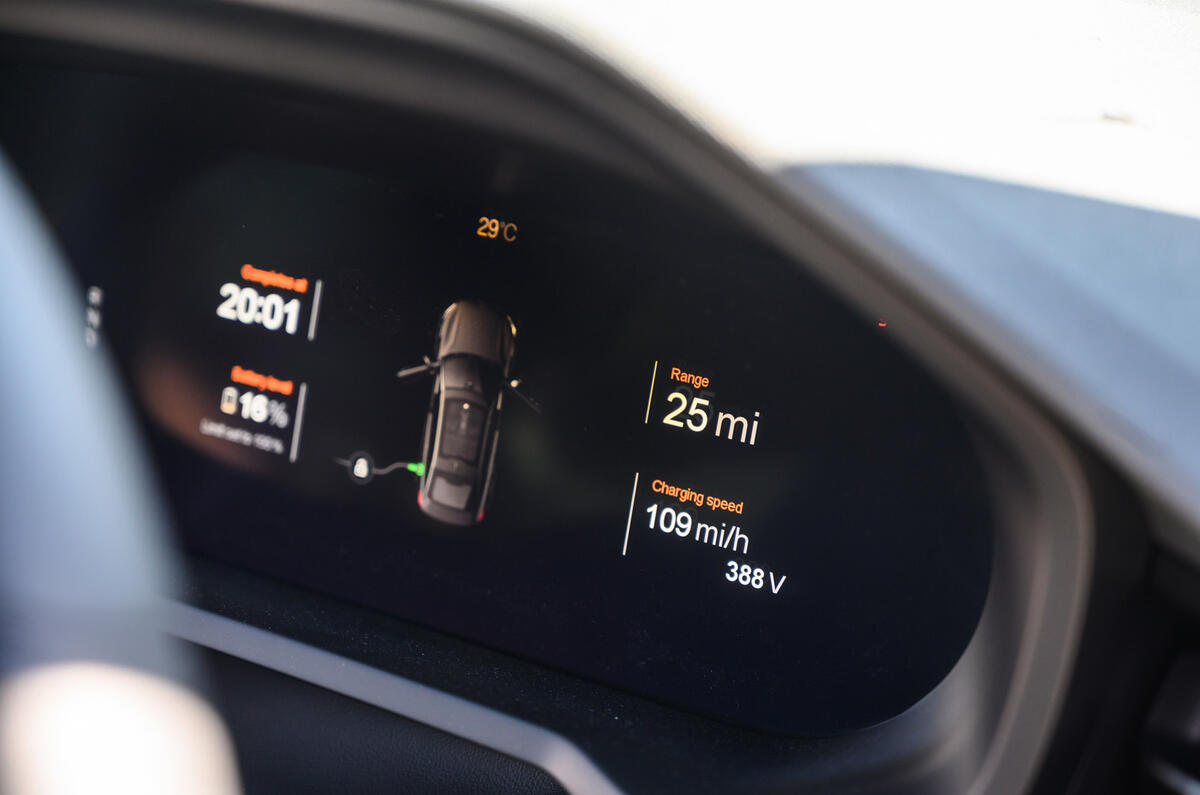
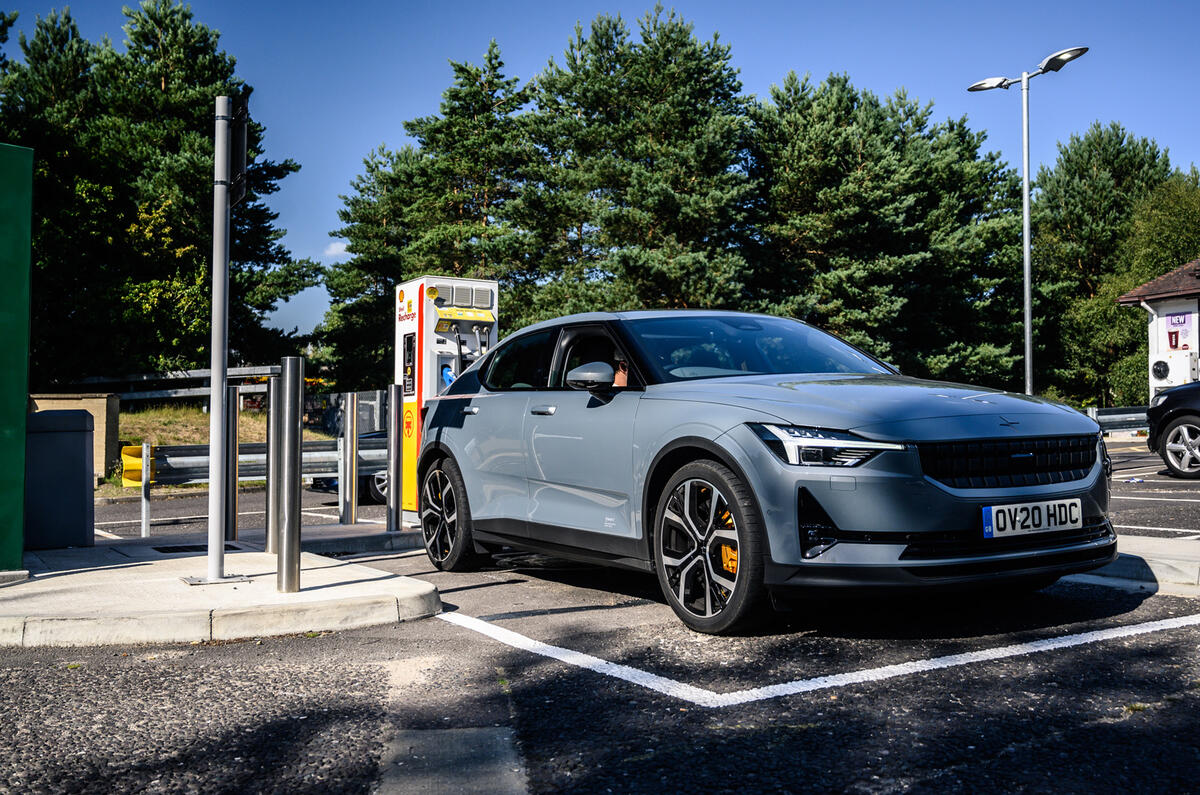
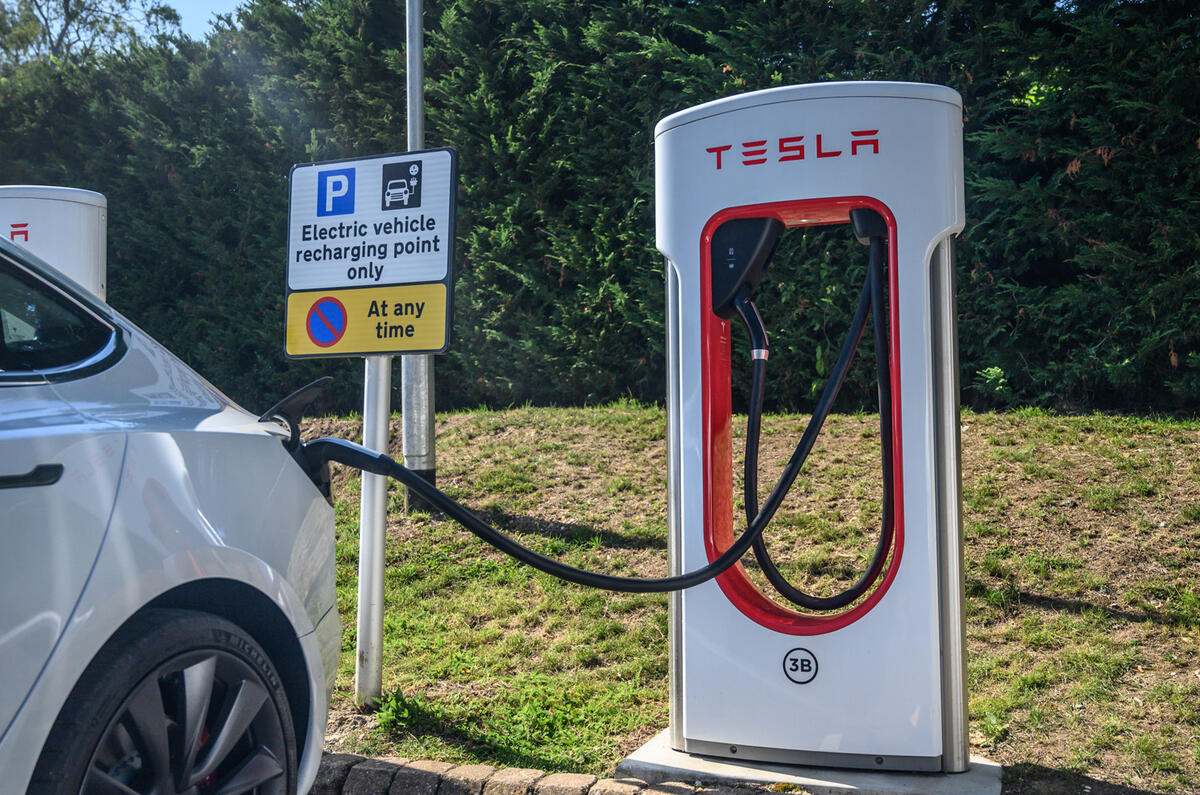
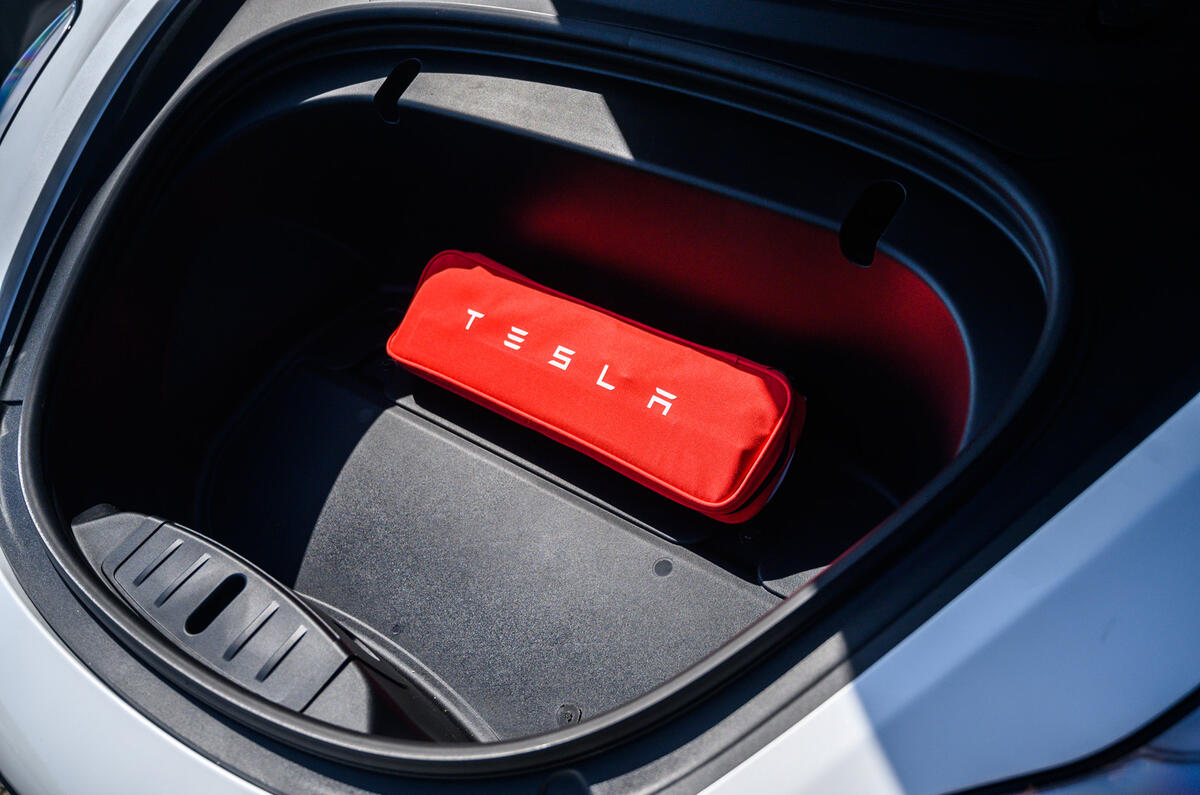
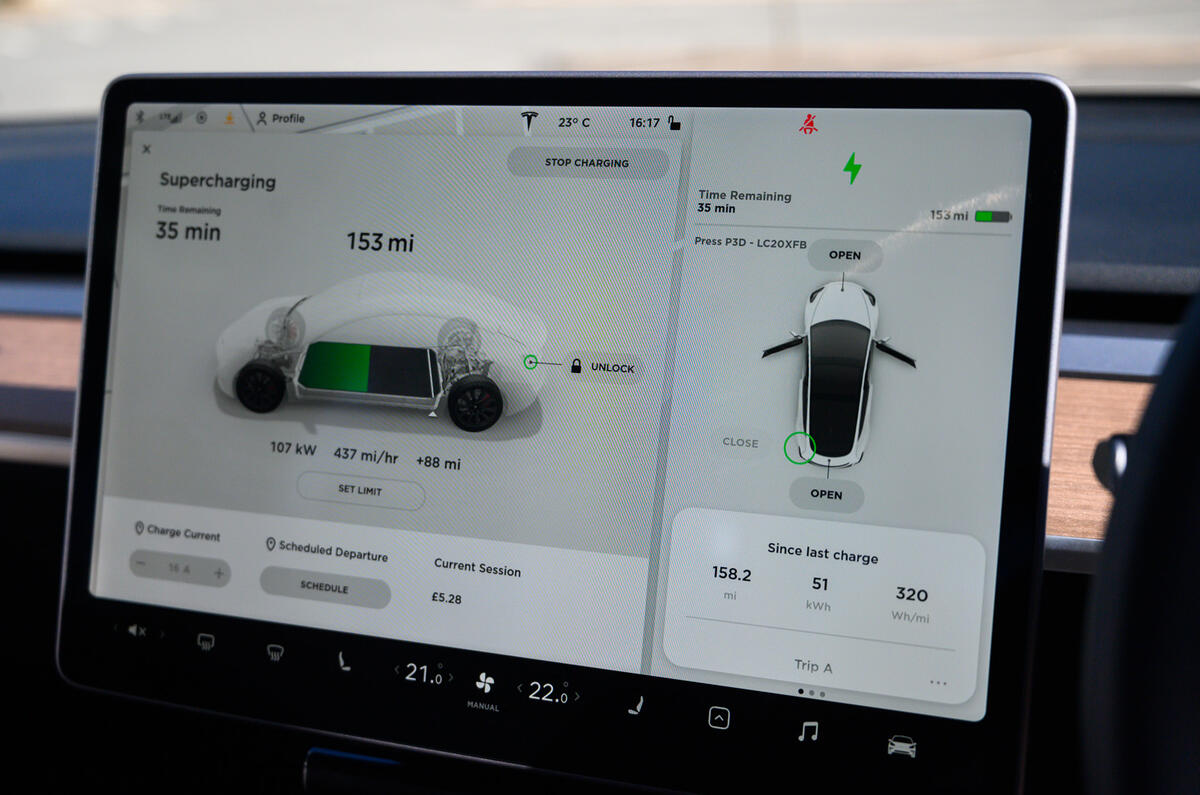
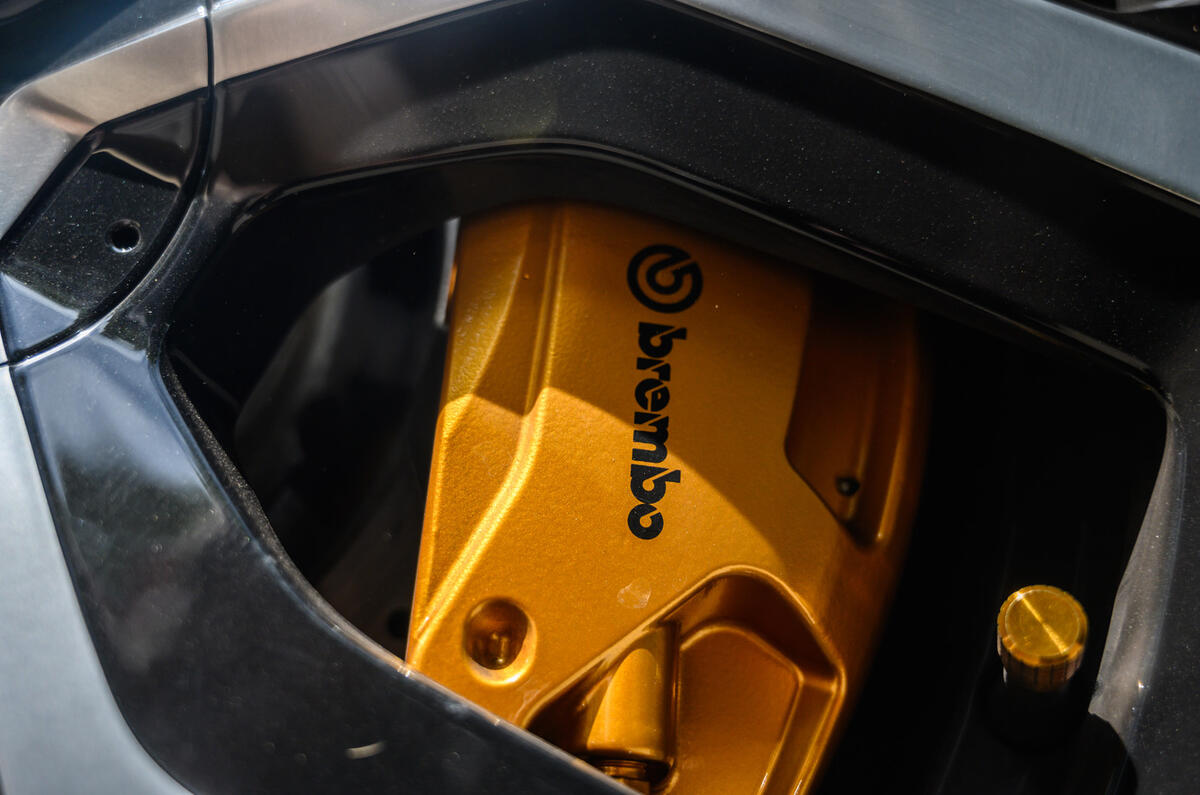
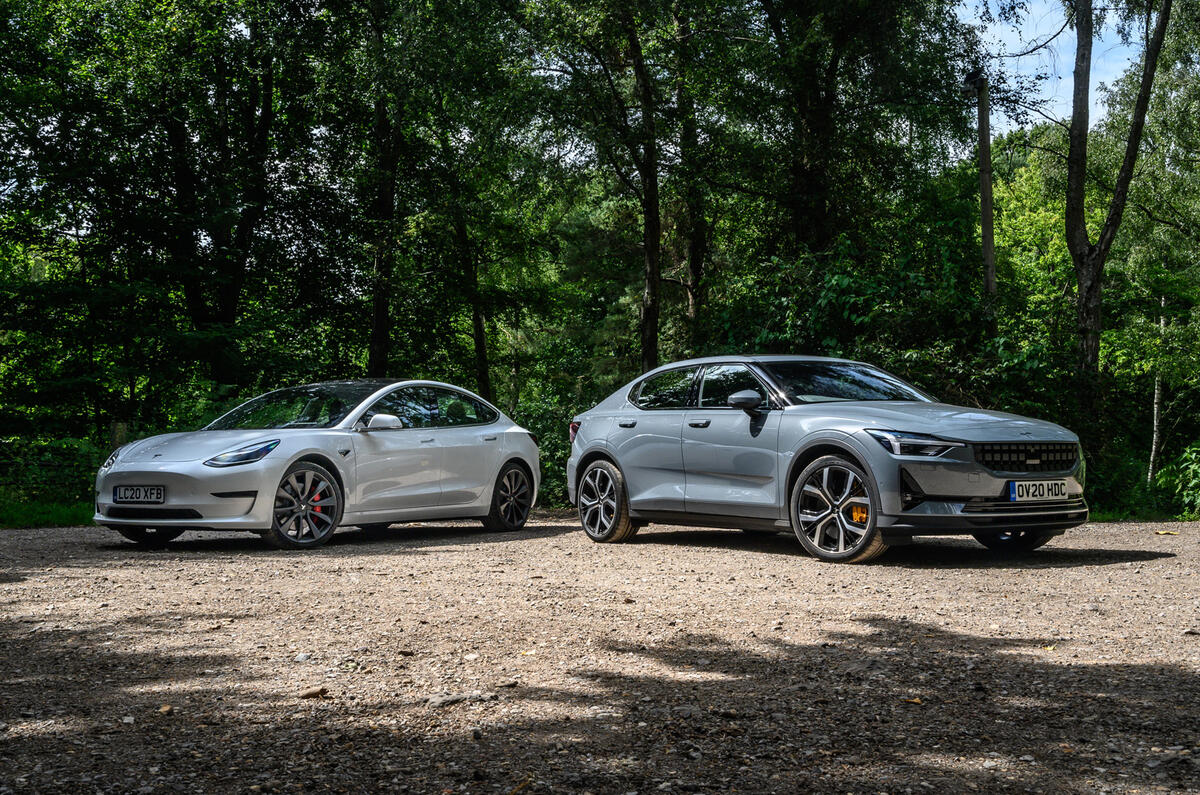

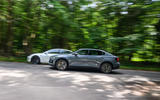
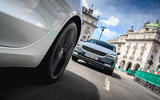
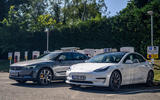
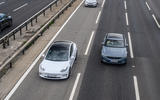
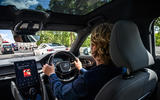
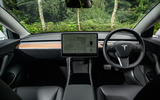
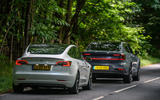
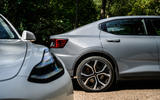
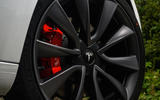


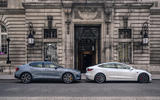

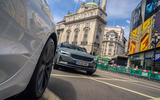
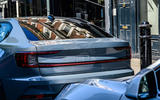
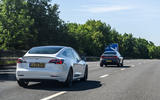
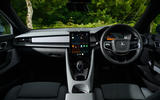
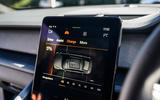
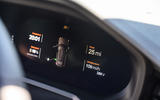
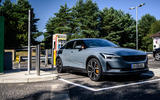

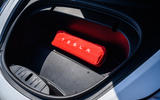
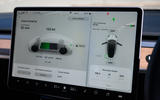

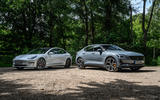





Join the debate
Add your comment
To be precise, he was using
To be precise, he was using the passenger door to get in.
Tesla should concentrate on
Tesla should concentrate on research & development and leave the actually building of cars to others.
Broadly speaking, Americans see the car as a disposable consummer product and are neither interested in build quality, fit and finish nor in its longevity.
I know someone who for weeks have been getting in and out of his Model S via the passenger door, and another whose chrome strips between the front & rear doors are grotesquely misaligned.
So basically
A first electric product from a fairly new company that is part of a legacy car company produce their first EV on a platform that isnt a bespoke EV platform, in a brand new factory, and it gets within a whisker of the latest and greatest Tesla currently in production, but actually beats it on quality and refinement, and because its more conventional, its probably far easier to adapt to, and peole think Tesla are the winner.
Sorry but if I was Tesla I would be getting very worried, the legacy makers are waking up, they already have their dealer networks in place and a customer base, they are on every street corner, its only a matter of time, before they not only catch up, but leave Tesla in the dust, and who are Tesla going to sell its surplus emmisions tickets to, that are keeping them afloat, when other companies no longer need them.
Chinese Polestar 2
You do realise, CCPolestar built a vehicle in 2020, that still doesnt have the technology to compete with a 2012 Tesla model S right?
The sales figures of this vehicle speak for itself. The company will be bankrupt by mid 2021, its a china car so europe sales are low, its a china car so sales in the USA are low. Its not marketted as a china car so sales in china are low.Useless Volvo failed again.
WinstonAlexanderson wrote:
Wow, not only stupid, but a troll and a bigot as well, I bet your parents are so proud, as for going bankrupt, no chance whatsoever, Geely have very deep pockets..